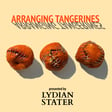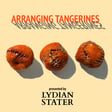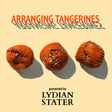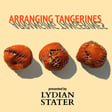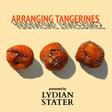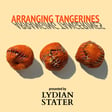
Arranging Tangerines Episode 29 - A Conversation with Maria Gabler
In this weeks episode, artist Maria Gabler walks us through her solo exhibition titled 'TRAMA' at PROXYCO Gallery located in Manhattan's Lower East Side. The show runs through July 20th - go see it!
María Gabler (b. 1989) earned her BFA from the Catholic University of Chile and MFA in Visual Arts from the University of Chile. Gabler has exhibited extensively in Chile, including the solo shows “La Ventana” (2022) at Galería Gabriela Mistral, “Anfibia” (2021) at MAM Chiloé, “La Galería” (2017) at Sala de Arte CCU, and “Mirador” (2015) at Galería Tajamar. She has also participated in several group exhibitions in spaces such as Matucana 100, Galería D21, Galería Macchina, Galería Local, and Museo de la Solidaridad, among others. Her work has been recognized with the Sustainable Pavilion Award from the National Council for Culture and the Arts of Chile at ChACO Fair 2011; FONDART 2015, 2017, and 2020; Third Place in 2015 and First Place in 2021 in the CCU Art Fellowship and the Ca.Sa Foundation/Collection Award 2021, among others. In addition, since 2020, she has been part of the National Collection of Contemporary Art of Chile at the NationalCenter of Contemporary Art in Cerrillos.
PROXYCO presents the works of emerging and mid-career artists from Latin America.
Through exhibitions with artists that we represent as well as collaborations with galleries from Latin America and beyond, we aim to advance the understanding of work by artists of Latin American descent in an international art context. For PROXYCO, the term “Latin American” is not an essentializing classifier, but rather a fluid framework to value and engage with art that is informed by both a distinct cultural heritage and an ever-widening global perspective.
Located in Manhattan’s Lower East Side, PROXYCO was founded by Alexandra Morris (b. Mexico City) and Laura Saenz (b. Bogota).
Links:
